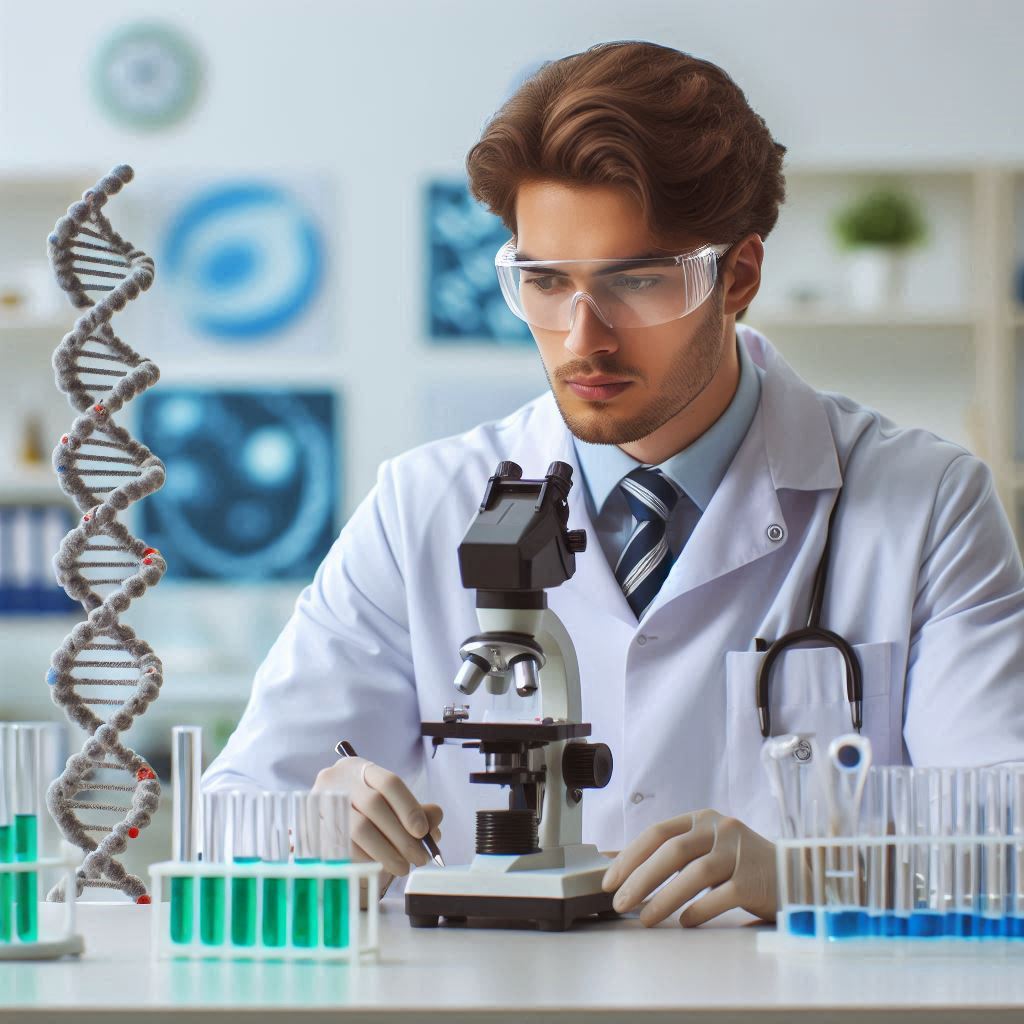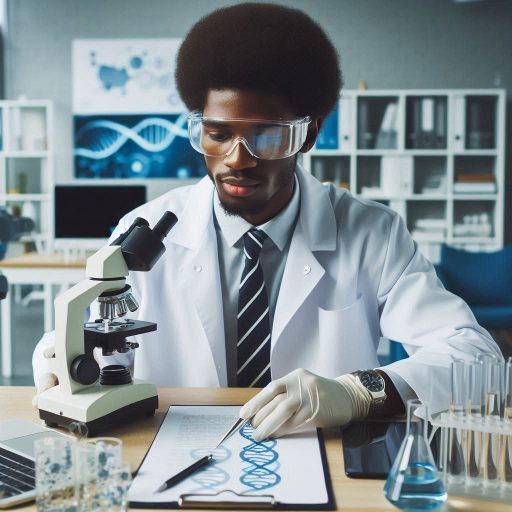Introduction
Biomedical engineering integrates engineering principles with biological and medical sciences to improve healthcare.
This field focuses on creating technologies that enhance patient care and treatment options.
Biomedical engineers work on various projects, including medical devices, imaging technologies, and drug delivery systems.
Drug delivery systems refer to methods that deliver medications effectively to specific sites in the body.
These systems ensure that drugs are released in a controlled manner.
They enhance the therapeutic effects of medications while minimizing side effects.
Biomedical engineering plays a crucial role in developing innovative drug delivery systems.
Engineers design advanced systems that improve the absorption, distribution, and release of drugs.
They utilize various technologies, including nanoparticles, microneedles, and implantable devices, to achieve targeted delivery.
Furthermore, these systems can personalize treatment, allowing for tailored therapies that meet individual patient needs.
For example, localized drug delivery reduces systemic exposure and improves efficacy.
The integration of smart technologies enables real-time monitoring and adjustments in drug release.
This innovation leads to more effective treatments and improved patient compliance.
Biomedical engineering significantly contributes to the development of drug delivery systems.
These advancements transform how medications are administered, ultimately enhancing patient outcomes and overall healthcare quality.
Overview of Biomedical Engineering
The Intersection of Engineering, Biology, and Medicine
Biomedical engineering sits at the crossroads of engineering, biology, and medicine.
This multidisciplinary field combines principles from these areas to improve healthcare.
Engineers apply their knowledge to design innovative solutions for medical challenges.
They collaborate with biologists and medical professionals to understand biological systems.
Understanding human biology is crucial for developing effective medical technologies.
Biomedical engineers study cellular and molecular processes to design drug delivery systems.
This knowledge helps them create targeted therapies that improve patient outcomes.
By merging engineering and biological sciences, biomedical engineers can solve complex healthcare problems.
Furthermore, biomedical engineers utilize engineering principles to develop medical devices and systems.
They design everything from imaging equipment to prosthetics.
Their work enhances diagnostic capabilities and treatment options.
This integration of disciplines fosters innovation and drives advancements in healthcare technology.
Importance of Biomedical Engineering in Healthcare
Biomedical engineering plays a vital role in addressing healthcare challenges.
The growing complexity of diseases necessitates innovative solutions.
Engineers develop drug delivery systems that ensure precise medication administration.
These systems can improve therapeutic efficacy and reduce side effects.
For example, targeted drug delivery can direct medications to specific sites in the body.
This precision minimizes the impact on healthy tissues.
By improving drug efficacy, biomedical engineers contribute to better patient outcomes and quality of life.
Moreover, biomedical engineering fosters the development of advanced diagnostic tools.
These tools enhance disease detection and monitoring.
Early diagnosis can lead to timely interventions, significantly impacting patient survival rates.
By creating solutions that address critical healthcare needs, biomedical engineers improve the overall efficiency of healthcare systems.
Fields Within Biomedical Engineering
Biomedical engineering encompasses various specialized fields.
Each area addresses unique challenges in healthcare.
One prominent field is tissue engineering, which focuses on creating biological substitutes for damaged tissues.
Researchers in this area aim to develop functional tissue that can restore normal functions.
Another essential field is medical imaging.
Engineers in this domain design technologies for visualizing the human body.
They develop systems like MRI, CT scans, and ultrasound machines.
These technologies enhance diagnostic accuracy and treatment planning.
Biomechanics is a vital subfield that studies movement and mechanics in biological systems.
Engineers in biomechanics work on designing orthopedic devices and improving rehabilitation techniques.
Their contributions lead to better patient recovery and mobility.
Regenerative medicine is also a growing area within biomedical engineering.
This field focuses on repairing or replacing damaged cells and tissues.
Researchers explore stem cell therapy and gene editing to develop innovative treatments.
Biomedical engineering merges engineering, biology, and medicine to tackle healthcare challenges.
This multidisciplinary field plays a crucial role in developing drug delivery systems and advanced medical technologies.
Various specialized fields, such as tissue engineering and medical imaging, further demonstrate the breadth of biomedical engineering’s impact.
As this field continues to evolve, it will play an increasingly vital role in improving healthcare outcomes for patients worldwide.
Read: Challenges and Rewards: The Dual Life of an U.S. Environmental Scientist
Importance of Drug Delivery Systems
The Significance of Drug Delivery Systems in Healthcare
Drug delivery systems play a crucial role in modern healthcare.
They ensure that medications reach the right site in the body at the appropriate time.
Effective drug delivery enhances therapeutic outcomes and improves patient compliance.
Properly designed drug delivery systems can optimize the therapeutic effect of drugs.
They can also minimize the frequency of dosing, making it easier for patients to adhere to treatment plans.
By improving the efficacy of medications, drug delivery systems contribute to better health outcomes.
In addition to improving efficacy, drug delivery systems also address issues related to drug stability and solubility.
They can protect sensitive drugs from degradation and ensure that they remain effective.
This protection is essential for maintaining the overall integrity of pharmaceuticals.
Targeted Drug Delivery for Improved Treatment
Targeted drug delivery offers a more precise approach to treatment.
This method directs medications specifically to diseased tissues while sparing healthy ones.
By doing so, targeted delivery can significantly enhance treatment effectiveness.
One of the main benefits of targeted drug delivery is its ability to reduce side effects.
Traditional drug delivery methods often affect healthy tissues, leading to unwanted adverse reactions.
For instance, chemotherapy can harm healthy cells, resulting in nausea and hair loss.
Targeted drug delivery systems can minimize these side effects.
They can concentrate the drug’s action on cancer cells while limiting exposure to normal tissues.
As a result, patients experience fewer side effects and greater overall satisfaction with their treatment.
Targeted delivery can improve drug bioavailability.
By ensuring that more of the drug reaches the intended site, targeted systems enhance the treatment’s effectiveness.
This approach leads to better patient outcomes and increased therapeutic success.
Common Drug Delivery Methods
Several drug delivery methods are commonly used in healthcare today.
Oral medications represent one of the most popular methods.
Patients take these medications in pill or liquid form, allowing for easy administration.
Oral medications offer convenience and comfort, making them a preferred choice for many patients.
However, they may face challenges related to absorption and bioavailability.
Factors like food intake and gastrointestinal conditions can affect the drug’s effectiveness.
Injections are another common drug delivery method.
They allow for rapid delivery of medications directly into the bloodstream or tissues.
This method is particularly useful for drugs that require immediate effects, such as pain relief or emergency medications.
Other advanced delivery systems are emerging, such as transdermal patches and inhalers.
Transdermal patches provide sustained release of medication through the skin, offering a non-invasive option.
Inhalers allow for direct delivery of medications to the lungs, which is essential for respiratory conditions.
Drug delivery systems are essential components of modern healthcare.
They enhance treatment effectiveness and minimize side effects, improving patient outcomes.
By utilizing methods such as oral medications and injections, healthcare professionals can provide effective therapies.
As biomedical engineering continues to advance, the development of innovative drug delivery systems will further enhance the quality of patient care.
Embracing these advancements will lead to more effective treatments and improved health outcomes for patients worldwide.
Read: Job Market Trends: Future of Chemistry Jobs in America
Challenges in Drug Delivery
Obstacles in Traditional Drug Delivery Methods
Traditional drug delivery methods face several significant obstacles.
These methods often lack precision, leading to ineffective treatment outcomes.
Oral medications can undergo significant metabolic changes before reaching their target site.
This process can reduce the drug’s efficacy, requiring higher doses.
Injections can cause discomfort and anxiety for patients.
They may also lead to inconsistent drug absorption in the bloodstream.
Traditional methods may not deliver drugs directly to the target area.
This lack of precision can result in side effects and diminished therapeutic effects.
Another challenge is the limited ability to control drug release rates.
Many traditional delivery systems release drugs too quickly or too slowly.
This inconsistency can affect treatment adherence and overall patient health.
The Need for Precise and Efficient Drug Delivery Systems
There is a growing need for more precise and efficient drug delivery systems.
Targeted delivery can improve treatment outcomes and minimize side effects.
By directing drugs to specific tissues or cells, healthcare providers can enhance therapy effectiveness.
Moreover, efficient drug delivery systems can reduce the required dosage of medications.
Lower doses can decrease the risk of adverse reactions and improve patient compliance.
Patients benefit from improved treatment experiences and outcomes.
The rise of personalized medicine highlights the importance of tailored drug delivery solutions.
Each patient has unique needs, requiring customized approaches.
Effective drug delivery systems can consider individual factors such as genetics, lifestyle, and specific health conditions.
Innovations in Biomedical Engineering
Biomedical engineering plays a crucial role in developing innovative drug delivery systems.
Engineers design advanced systems that enhance drug targeting and release mechanisms.
These innovations can address the challenges associated with traditional delivery methods.
One significant advancement is the development of nanoparticle-based delivery systems.
These tiny particles can encapsulate drugs and deliver them directly to target cells.
Nanoparticles can enhance drug solubility, stability, and bioavailability.
This targeted approach minimizes systemic exposure and reduces side effects.
Another innovative solution is the use of implantable drug delivery systems.
These systems can release medications over extended periods, ensuring consistent therapeutic levels.
Implantable devices provide sustained release, improving patient adherence and treatment outcomes.
Smart drug delivery systems are emerging in the biomedical engineering field.
These systems use sensors and feedback mechanisms to respond to physiological changes.
They can adjust drug release rates based on real-time monitoring of patient conditions.
Moreover, advancements in bioprinting technology enable the creation of personalized drug delivery devices.
Customized implants can be produced to fit individual patient anatomies.
This personalization enhances treatment efficacy and patient satisfaction.
In short, traditional drug delivery methods face several challenges that affect treatment efficacy.
There is a clear need for more precise and efficient delivery systems in healthcare.
Biomedical engineering addresses these challenges through innovative solutions like nanoparticles, implantable devices, and smart drug delivery systems.
As research continues, these advancements promise to improve patient outcomes and revolutionize drug therapy.
Read: Challenges and Rewards: Navigating the Chemist Career Path

Innovations in Drug Delivery Systems
Recent Developments in Drug Delivery Technology
Recent advancements in drug delivery technology have significantly improved therapeutic effectiveness.
Researchers now focus on targeted delivery methods that minimize side effects.
These innovations aim to enhance patient outcomes and improve medication adherence.
One notable trend involves the use of personalized medicine.
Tailoring drug delivery systems to individual patients maximizes therapeutic benefits.
This approach considers genetic, metabolic, and physiological differences among patients, leading to more effective treatments.
Furthermore, smart drug delivery systems are gaining traction.
These systems release drugs in response to specific biological triggers.
This responsive approach ensures optimal drug levels in the body, improving overall treatment efficacy.
The Use of Nanotechnology, Microfluidics, and Biomaterials in Creating Advanced Drug Delivery Systems
Nanotechnology plays a pivotal role in developing advanced drug delivery systems.
Researchers use nanoparticles to encapsulate drugs, enhancing their solubility and stability.
These nanoparticles can navigate through biological barriers more effectively than traditional drug formulations.
By manipulating particles at the nanoscale, scientists can improve drug distribution within the body.
This technique allows for targeted therapy, delivering medications directly to diseased tissues.
For example, cancer treatments can be localized, reducing damage to healthy cells.
Nanotechnology enables controlled release of drugs over time.
This sustained release reduces the frequency of dosing and enhances patient compliance.
As a result, nanotechnology is revolutionizing the way medications are delivered and absorbed in the body.
Microfluidics technology is another promising area in drug delivery systems.
This technology enables precise control of fluids at a microscale.
By manipulating small volumes of liquid, researchers can create tailored drug formulations.
Microfluidics facilitates the development of complex drug delivery systems.
It allows for the simultaneous encapsulation of multiple drugs, optimizing combination therapies.
This capability is particularly beneficial in treating complex diseases, such as cancer and autoimmune disorders.
Moreover, microfluidic devices can be used for on-demand drug delivery.
These systems can release drugs in response to specific conditions, such as changes in pH or temperature.
This adaptability enhances the effectiveness of treatments while minimizing side effects.
Biomaterials also play a crucial role in developing drug delivery systems.
These materials are designed to interact safely with biological systems.
They can be used to create implants or devices that deliver drugs over extended periods.
Researchers are exploring various biomaterials, including hydrogels and polymeric matrices.
These materials can encapsulate drugs and control their release rates.
For instance, hydrogels can swell in response to environmental changes, releasing drugs gradually.
Examples of Successful Drug Delivery Innovation Projects
Successful projects have demonstrated the potential of biomaterials in drug delivery.
For example, researchers developed a hydrogel-based system that releases insulin in response to blood glucose levels.
This innovation represents a significant step toward improving diabetes management.
Another notable project involved using nanoparticles to deliver chemotherapeutic agents directly to tumors.
This targeted approach reduced side effects and improved treatment outcomes for cancer patients.
In addition, microfluidic systems have enabled the development of personalized cancer therapies.
These systems allow for rapid formulation and testing of drug combinations tailored to individual patient profiles.
To sum it up, the field of drug delivery systems is evolving rapidly.
Recent developments focus on personalized medicine, nanotechnology, microfluidics, and biomaterials.
These advancements enhance drug efficacy and minimize side effects, ultimately improving patient outcomes.
Successful innovation projects showcase the potential of these technologies in revolutionizing treatment approaches.
As research continues, we can expect even more breakthroughs in drug delivery systems, paving the way for more effective therapies in the future.
Read: Diverse Career Paths: From Chemist to Patent Attorney in the US
Role of Biomedical Engineers in Developing Drug Delivery Systems
Responsibilities of Biomedical Engineers in Creating Drug Delivery Solutions
Biomedical engineers are responsible for designing drug delivery systems tailored to specific medical needs.
They analyze the pharmacokinetics and pharmacodynamics of drugs.
This analysis helps them understand how drugs behave in the body.
Engineers develop various delivery methods, including oral, injectable, and transdermal systems.
Each method requires a unique design approach based on the drug’s properties.
For example, engineers must consider the solubility, stability, and release profiles of each drug.
Biomedical engineers conduct extensive testing to ensure system safety and effectiveness.
They perform in vitro and in vivo studies to assess the performance of their designs.
This testing is crucial for meeting regulatory requirements before market introduction.
Furthermore, engineers work on developing controlled-release systems.
These systems aim to maintain optimal drug levels in the bloodstream over time.
By controlling release rates, engineers enhance patient compliance and treatment outcomes.
Finally, engineers must stay informed about advancements in materials science and nanotechnology.
These fields provide innovative solutions for drug delivery systems.
Engineers often explore biocompatible materials and nanoparticles to improve drug absorption and targeting.
Collaborative Nature of Biomedical Engineering Projects
The development of drug delivery systems is inherently collaborative.
Biomedical engineers frequently work alongside medical professionals and researchers.
This collaboration ensures that the systems developed meet clinical needs.
Medical professionals provide valuable insights into patient requirements and treatment goals.
They help engineers understand the specific challenges faced in clinical settings.
This collaboration leads to the development of more effective solutions.
Researchers contribute their expertise in pharmacology and materials science.
They assist engineers in selecting appropriate compounds and formulations.
This teamwork enhances the overall design process, resulting in innovative drug delivery systems.
Moreover, interdisciplinary teams facilitate comprehensive project development.
Engineers, chemists, and biologists collaborate to address complex challenges.
This collaborative approach promotes knowledge sharing and fosters creativity in finding solutions.
Skills and Knowledge Required for a Career in Drug Delivery System Development
A successful career in drug delivery system development requires a diverse skill set.
Biomedical engineers must possess strong analytical and problem-solving abilities.
These skills help them address complex challenges throughout the development process.
Additionally, a solid understanding of biology and chemistry is crucial.
Engineers must comprehend drug interactions and biological mechanisms.
This knowledge aids in designing effective and safe drug delivery systems.
Technical skills in computer modeling and simulation are also essential.
Engineers often use these tools to predict drug behavior and optimize designs.
Proficiency in software programs enhances their ability to innovate.
Effective communication skills are vital for successful collaboration.
Engineers must convey complex ideas clearly to diverse teams.
Strong interpersonal skills foster teamwork and facilitate productive discussions.
A commitment to lifelong learning is essential in this rapidly evolving field.
Biomedical engineers must stay current with industry trends and advancements.
Engaging in professional development opportunities ensures their skills remain relevant.
Biomedical engineers play a pivotal role in developing drug delivery systems.
Their responsibilities include designing, testing, and optimizing solutions that meet clinical needs.
Collaboration with medical professionals and researchers enhances the effectiveness of these projects.
Aspiring engineers should focus on developing analytical skills, technical knowledge, and effective communication abilities.
By embracing these elements, they can contribute to advancing drug delivery technologies and improving patient care.
Transform Your Career Today
Unlock a personalized career strategy that drives real results. Get tailored advice and a roadmap designed just for you.
Start NowFuture Trends in Biomedical Engineering and Drug Delivery
Predicting the Future of Drug Delivery Technology
The future of drug delivery technology holds exciting possibilities.
We anticipate advancements that improve the precision and efficiency of treatments.
Innovative methods will enable targeted delivery systems to reduce side effects.
Patients will benefit from therapies designed specifically for their unique needs.
In the coming years, we expect to see the rise of nanotechnology.
Nanoparticles can carry drugs directly to specific cells or tissues.
This approach minimizes damage to healthy cells, enhancing treatment effectiveness.
Moreover, smart drug delivery systems are on the horizon.
These systems will use sensors to release medications at the right time.
By responding to the patient’s condition, they can optimize therapeutic outcomes.
The integration of artificial intelligence will transform drug delivery.
AI can analyze patient data to personalize treatment plans.
This technology will enhance the accuracy of dosage and timing for each patient.
Advancements in Personalized Medicine and Targeted Drug Delivery
Personalized medicine is becoming a reality in drug delivery systems.
Tailoring treatments to individual genetic profiles allows for more effective therapies.
Biomedical engineers play a key role in developing these personalized systems.
Targeted drug delivery will become more refined as technology advances.
Engineers will create systems that release drugs directly at the disease site.
This targeted approach can improve efficacy while minimizing adverse reactions.
Furthermore, we can expect innovations in combination therapies.
Biomedical engineers will design systems that deliver multiple medications simultaneously.
This strategy will allow for synergistic effects, enhancing overall treatment outcomes.
Moreover, advances in biomaterials will enable more effective drug delivery systems.
Engineers will develop materials that respond to specific stimuli.
These materials can control drug release based on environmental changes in the body.
The Role of Biomedical Engineers in Shaping Healthcare
Biomedical engineers are at the forefront of developing innovative drug delivery systems.
Their expertise bridges the gap between engineering and medicine.
This unique position enables them to create solutions that enhance patient care.
Engineers collaborate with researchers and healthcare professionals to address pressing challenges.
They analyze current delivery methods and identify areas for improvement.
This collaboration fosters a culture of innovation within the healthcare sector.
Moreover, engineers contribute to clinical trials to test new drug delivery systems.
They gather data on efficacy and safety to refine these technologies.
By participating in trials, they ensure that new systems meet regulatory standards.
Biomedical engineers play a crucial role in educating healthcare providers.
They offer training on new drug delivery technologies and their applications.
This knowledge transfer ensures that medical professionals can use these innovations effectively.
In a nutshell, the future of drug delivery technology is promising.
Advancements in personalized medicine and targeted delivery systems will enhance patient care.
Biomedical engineers are pivotal in shaping this future through their innovative contributions.
By continuously exploring new technologies, they will improve the efficacy and safety of treatments.
Together, they will revolutionize healthcare, offering patients better outcomes and improved quality of life.
Conclusion
Biomedical engineering plays a critical role in developing drug delivery systems.
These systems enhance the efficacy of treatments and improve patient adherence.
In the blog, we explored how engineers design innovative methods to deliver drugs precisely where needed in the body.
The importance of these advancements cannot be overstated.
Innovative drug delivery technologies, such as nanoparticles and microneedles, offer targeted therapy and reduce side effects.
Improved delivery methods can lead to better healthcare outcomes, ensuring patients receive optimal treatment.
For example, controlled-release formulations allow medications to be administered less frequently, enhancing patient compliance.
Personalized drug delivery systems are emerging.
These systems tailor treatments to individual patient needs, improving overall effectiveness.
This personalization leads to a more efficient healthcare system that focuses on patient-centered care.
We encourage further exploration of the intersection between biomedical engineering and drug delivery.
Research in this area can unlock new therapies and improve existing ones.
Collaboration among engineers, healthcare providers, and researchers will drive innovation and enhance drug delivery systems.
Biomedical engineering is vital for developing advanced drug delivery systems.
These innovations significantly impact healthcare outcomes, ultimately benefiting patients.
[E-Books for Sale]
The Big Book of 500 High-Paying Jobs in America: Unlock Your Earning Potential
$19.99 • 500 High-Paying Jobs • 330 pages
Explore 500 high-paying jobs in America and learn how to boost your career, earn more, and achieve success!
See All 500 High-Paying Jobs of this E-Book
1001 Professions Without a Degree: High-Paying American Jobs You Can Start Now
$19.99 • 1001 Professions Without a Degree • 174 pages
Discover 1001 high-paying jobs without a degree! Unlock career tips, skills, and success strategies for just $19.99!




